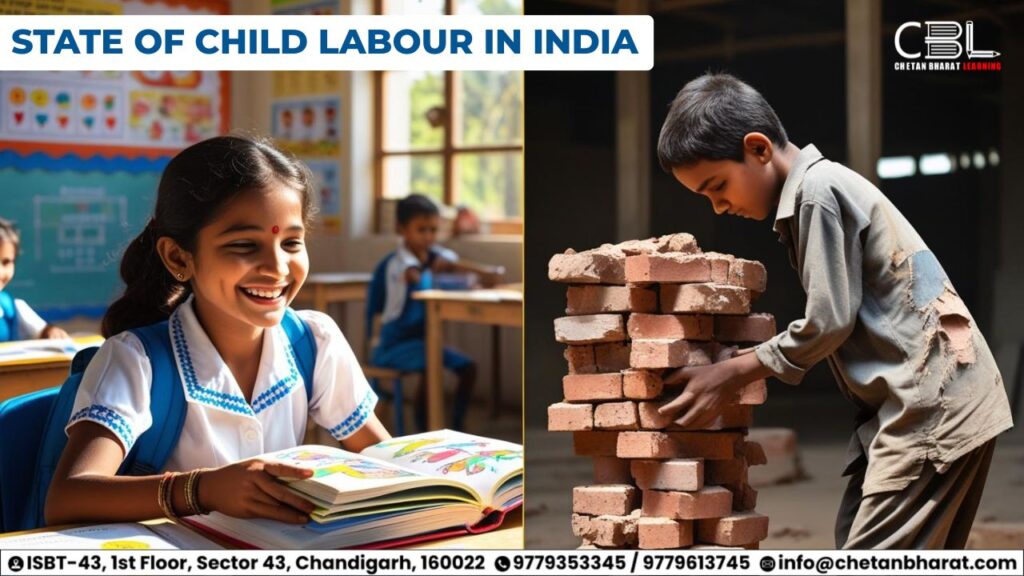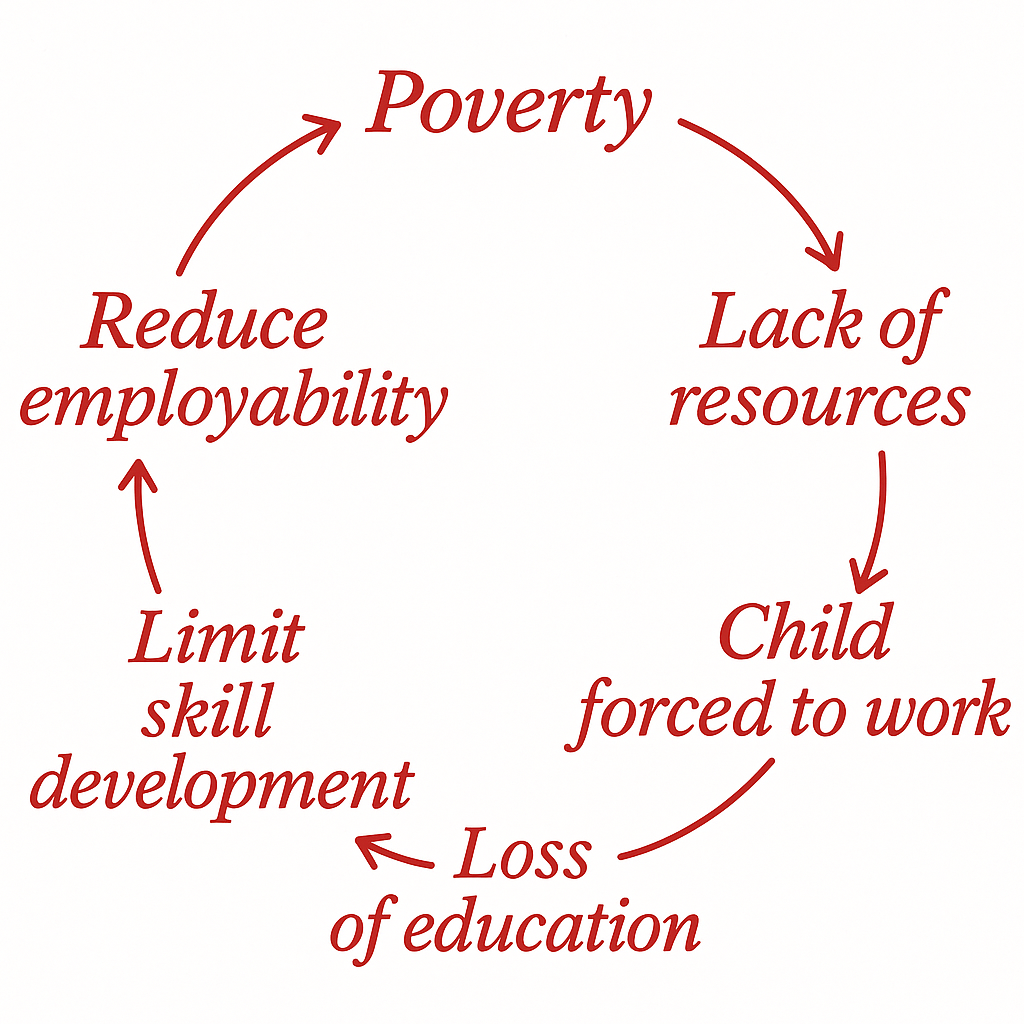
Important for UPSC, State PCS
Prelims: Key facts related to state of child labour in India.
Mains: General Studies : State of Child labour in India and reason behind its persistence despite stringent laws.
Context:
Child labour in India persists not due to lack of laws but due to weak enforcement.
Child Labour
- International Labour Organisation (ILO) defines the term child labour as work that deprives children of their childhood, their potential and their dignity, and that is harmful to physical and mental development.
- The Child and Adolescent Labour (Prohibition and Regulation) Act, 1986 (amended in 2016) defines:
- child as a person who is below the age of 14 years.
- adolescent as a person who is between the age of 14-18 years.
- As per national criteria, only those below the age of 14 engaged in economic activities (outside family enterprises and audio-visual entertainment industry) are considered child laborers.
State of Child Labour in India
- As per Census 2011, 10.1 million children (>1 crore) in India in the age group (5-14) years are working, either as ‘main worker’ or as ‘marginal worker’.
- As per Periodic Labour Force Survey 2018-19 the number of children in child labour in India ranged from 18 lakh (using the national definition) to 33 lakh (using the international definition).
- Almost half of these children work within their own families, with the agricultural sector employing the largest share, followed by industrial sectors like manufacturing and construction. They are frequently engaged in highly dangerous and exploitative sectors like Match and fireworks production, Glass and leather industries, Brick kilns and coal mines.
Impacts of Child Labour on Children
Child labour has deep and long-lasting impacts on children’s physical, mental, and social well-being:
- Physical and Mental Abuse: Children employed in factories and informal sectors often face physical and verbal abuse, extremely low wages, and are denied medical care even in the event of injuries.
- Health Hazards: Work environments lack basic hygiene, sanitation, and clean water, making children highly vulnerable to infectious diseases. Exposure to toxic substances in industries like glass, fireworks, and leather can lead to chronic, irreversible illnesses and premature death.
- Loss of Education: Working children are deprived of schooling, which affects their ability to break the cycle of poverty, restricts future opportunities, and leads to intergenerational poverty.
- Poverty Cycle: As per the ILO, child labour is both a cause and consequence of poverty. Child labour perpetuates the cycle of poverty, as the lack of education and skills hinders the children’s ability to escape poverty in the future.
- Social Isolation and Stigma: Working children often grow up in isolation, without proper emotional and social development, making reintegration into society or formal education systems difficult.

Constitutional Provisions for Protection of Child:
- Article 15 (3) permits positive discrimination in the favour of children.
- Article 21A which makes education free and compulsory between the ages of 6-14 years.
- Article 23 states that children should not be forced to work at cheap wages due to their economical or social disadvantage.
- Article 24 prohibits child labour in hazardous occupations, factories and mines.
- Article 39 requires the State to direct its policies to ensure the tender age of children is not abused.
Why Child Labour persists despite Strong Laws?
- Weak Enforcement:
- Child and Adolescent Labour (Prohibition and Regulation) Act, 1986 regulate the working conditions of children in India and prohibit their employment in certain hazardous occupations and processes. It was significantly amended in 2016 to further define hazardous work and expanded protection.
- However, real-world implementation remains weak. As per the government data, only 613 cases were registered under the Act in 2021 for violations involving children aged between 5 and 14 years.
- A significant portion of child labour is found in the informal economy, making it harder to regulate and monitor due to weak regulatory oversight.
- Lack of updated Census data: Last Census was conducted in 2011, there is no recent, accurate data on how many children are currently engaged in labour. This lack of updated information makes it hard for policymakers and organisations to assess the scale of the issue, allocate resources effectively, or implement targeted interventions to combat child labour.
Way Forward
- Strengthen enforcement mechanisms through better surveillance, inspections, and punishment for violators.
- Update and maintain reliable data on child labour through regular surveys and Census.
- Tackle root causes- poverty, lack of access to education, malnutrition.
- Provide support to rescued children including education, counseling, and vocational training.
CBL Practice Questions for Prelims –
According to the ILO, child labour refers to work that:
A) Helps children gain basic skills and experience
B) Is light work outside of school hours
C) Deprives children of their childhood, potential, dignity and harms physical/mental development
D) Is legal for adolescents above age 14
Answer: C
This aligns with the ILO’s definition: work that “deprives children of their childhood, their potential and their dignity, and that is harmful to physical and mental development”
CBL Mains Practice Question – Critically evaluate the Right to Education Act, NEP 2020, accelerated learning programmes and mid-day meals on retention and skill building.




Leave a Reply
You must be logged in to post a comment.